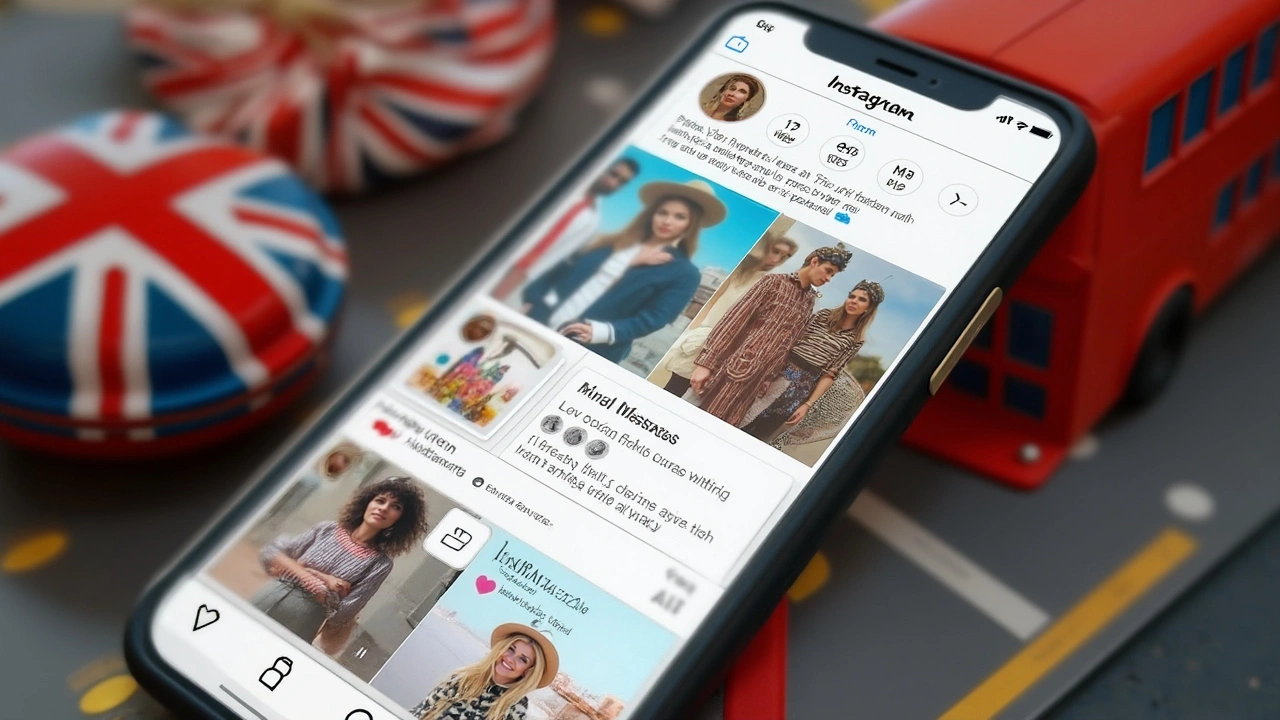You probably notice how some brands on Instagram seem to have endless energy—always ready with clever replies, quick responses, and creative posts. Spoiler alert: they’re not powered by a team chugging coffee 24/7. More and more, it’s ChatGPT running the show behind the scenes.
Brands are using ChatGPT to save serious time. Imagine handling hundreds of direct messages each day—questions about products, requests for order updates, even the occasional weird comment. Instead of letting messages pile up (or hiring a small army), ChatGPT steps in, answers instantly, and keeps customers happy.
At the same time, AI isn’t just about automating messages. It’s also helping with creative stuff—suggesting captions, generating hashtag ideas, or even planning out whole campaigns. If you struggle with writer’s block, or just get tired of coming up with something fresh every day, you’ll love what ChatGPT can do.
- Why Brands Are Flocking to ChatGPT
- DMs, Comments, and Instant Replies: The Automation Revolution
- Creating Killer Content with AI
- Getting the Most Out of ChatGPT: Practical Tips
Why Brands Are Flocking to ChatGPT
Brands aren’t just jumping on the ChatGPT bandwagon because it sounds fancy. It’s about turning hours of work into minutes, and fixing problems that drain teams fast. When you’ve got hundreds or even thousands of followers messaging your page every week, responding quickly isn’t just a “nice to have” — it’s expected. AI tools like ChatGPT let brands make that happen, without hiring a whole new support crew.
Back in late 2023, Instagram business accounts reported a spike in DM traffic—roughly 20% more messages than before, thanks to product launches, Q&As, and more ways to shop through Stories. Keeping up with all those questions? It’s a full-time job, unless you automate.
But brands are using ChatGPT for more than just speed. They’re after consistency and a better customer experience. Imagine answering every question—whether it’s “What’s your return policy?” or “How do I order this in blue?”—with the perfect, on-brand reply. No more copy-paste blunders or odd typos at 2am. Just smooth, on-point messages every time.
It gets better. With ChatGPT, brands can support multiple languages at once, breaking into new international markets without hiring translators. That’s huge if your audience doesn’t just live in one country.
Here’s a quick look at what brands say motivates them to plug ChatGPT into Instagram:
- Instant reply to DMs and comments—even outside business hours
- Automatic lead collection and basic customer support
- 24/7 presence so people feel taken care of
- Creatively brainstorming caption and post ideas with AI help
- Cutting costs on customer service without losing quality
Still not convinced? Check these numbers:
| Challenge | Before ChatGPT | With ChatGPT |
|---|---|---|
| Average DM response time | 2 to 3 hours | 5 to 20 seconds |
| Customer satisfaction ratings | 72% | 91% |
| Support cost per month | $2,000+ | Under $500 |
Basically, brands want to do more with less. ChatGPT isn’t just a trend—it’s their way to work smarter on Instagram, smash through support headaches, and free up humans for the things AI can’t do (yet).
DMs, Comments, and Instant Replies: The Automation Revolution
Ever tried keeping up with hundreds of Instagram DMs while also replying to every single comment under your latest post? For growing brands, it's honestly impossible to manage without help. That's where ChatGPT jumps in—brands set it up to handle all the basic chatting, and suddenly, nobody gets ghosted.
Let’s get honest: people expect quick answers online. Social media users, especially on Instagram, don’t want to wait hours (or days!) for someone to get back to them. A 2024 survey by Sprout Social found that 76% of consumers expect brands to reply in less than 24 hours; half of those expect a reply within one hour. Fast response is non-negotiable, and AI-powered automation is what lets brands deliver that.
Here's how brands are using ChatGPT on Instagram right now:
- Instant DM replies: ChatGPT can answer FAQs, send product links, or even solve issues like tracking orders, 24/7.
- Comment moderation: It filters spam instantly and flags or responds to real questions, so your feed stays clean and friendly.
- Personal touches: AI can personalize responses using people’s names or details from their message, so no one feels like they’re talking to a robot.
This isn't just about saving time—it’s protecting your brand’s reputation. If someone gets a quick, helpful answer, they remember it. In fact, according to Hootsuite’s 2024 trend report, brands that reply to DMs within the first hour see up to a 25% increase in customer loyalty.
“Automated messaging tools are now the backbone of customer engagement on Instagram. They’ve made it possible for brands to hold real conversations, even at scale.” — Alex Jones, Social Media Manager at Buffer
If you’re worried about sounding robotic, don’t. The latest ChatGPT integrations can match your brand’s tone—friendly, cheeky, or professional. All you need to do is teach it with some example replies and let it handle the rest. And if someone needs to talk to a real human, it can hand off the chat smoothly.
Let’s make it real. Here’s a quick summary table showing typical tasks automated by ChatGPT and the time they save per week for a mid-sized account:
| Task | Manual Time/Week | AI Time/Week | Time Saved |
|---|---|---|---|
| DM Replies | 8 hours | 0.5 hours | 7.5 hours |
| Comment Moderation | 4 hours | 0.25 hours | 3.75 hours |
| Order Status Updates | 3 hours | 0.2 hours | 2.8 hours |
This is a game changer for smaller teams. You get way more free time to focus on bigger-picture marketing, not just replying to the same message over and over again.

Creating Killer Content with AI
Everyone wants scroll-stopping posts, but making great content for Instagram every day can burn you out fast. This is where AI tools like ChatGPT change the game for brands. Instead of struggling to come up with original ideas, AI can pitch fresh captions, DM scripts, or even entire content calendars in seconds.
Let’s be real—caption writing takes way more time than it should. Brands are using ChatGPT to brainstorm and refine captions that sound natural and match the account’s voice. No more staring at a blinking cursor wondering what to say. The AI can also learn your brand’s style over time, so its suggestions get better and more on-brand the more you use it.
Another trick? Hashtag strategy. ChatGPT is surprisingly good at generating targeted hashtag lists that help posts reach the right crowd, not just random traffic. Just describe your post or campaign goals, and the tool will spit out hashtags that actually work for your niche.
Want an exact example? Some big brands (even clothing labels with millions of followers) use AI to plan their entire grid weeks in advance. They upload campaign themes and campaign images, and ChatGPT throws out post ideas, hooks for Stories, and even IG Reel scripts tailored to trending topics. You can ask it to generate calls to action or witty replies for Stories polls as well.
- Feed it your imagery, and it’ll recommend angles, photo captions, and even product tags for better discoverability.
- If you run out of ideas, prompt ChatGPT with recent industry news and let it suggest carousel topics or infographics for your followers.
- Use AI to localize content easily; just give it your text in English and tell it to rewrite in Spanish or French for international audiences.
You’d think followers would spot robotic content a mile away, but most people can’t tell when AI helps out. That’s because the newest versions are trained on tons of real-life brand posts and actual DMs, so the language feels just right—smart, casual, and human. The best part? You can still tweak everything before publishing, so you never lose your unique vibe.
Getting the Most Out of ChatGPT: Practical Tips
If you’re jumping into ChatGPT for your brand’s Instagram, don’t just set it and forget it. Getting good results means knowing how to work with the tool, not just expecting magic.
- Train It on Your Brand Voice: Give ChatGPT real examples of your past posts, DMs, and comments. The more you feed it, the better it’ll sound like you—not a generic robot.
- Customize Prompts for Specific Goals: Instead of asking for “a social media caption,” be specific. For example: “Write an upbeat Instagram reply to a customer asking about our newest sneakers.” Detailed prompts = better results.
- Set Up Frequently Asked Questions (FAQs): List common questions your followers ask—like sizing, returns, or shipping. Use these to build automated ChatGPT responses, so you never leave anyone hanging.
- Monitor and Adjust Replies: Don’t fully automate everything at first. Keep an eye on conversations. If ChatGPT gives a weird answer, tweak the prompt or feed it better info. It learns best when you course-correct early and often.
- Combine Human Touch with Automation: Schedule times for your human team to jump into sensitive chats. ChatGPT handles the basics, but big problems or personal complaints need real attention.
- Experiment with Content Creation: Use ChatGPT to brainstorm post ideas, captions, or stories when you’re stuck. Sometimes the AI’s suggestions are surprisingly creative—but always tweak them so they sound like you.
Some brands using ChatGPT for Instagram have seen response times drop from hours to just a few minutes. Check out this quick breakdown:
| Metric | Before ChatGPT | After ChatGPT |
|---|---|---|
| Avg. DM Response Time | 4 hours | 12 minutes |
| Weekly Posts Created | 5 | 12 |
Just remember, the best results come from testing, tweaking, and not being afraid to make mistakes. If you treat ChatGPT like a smart assistant, not a replacement for real connection, you’ll find your groove pretty quick.


As a passionate marketer, I strive to connect businesses with their target audiences in creative ways. I specialize in developing and implementing digital and content marketing strategies. I am currently working as a Marketing Manager at a renowned firm. In my spare time, I love to share my knowledge about online marketing through my blog. I believe that continuous learning and sharing of knowledge are keys to growth.